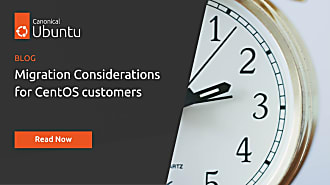Canonical
on 7 January 2013
What are the management factors in planning a migration from Windows to Ubuntu?
Best of our webinars – (From the Ubuntu: The Desktop of the Future webinar @ 29.25 min)
ANSWER
Large scale migrations from Windows to Linux desktop can be done well. But some very ambitious projects to move to an open source desktop have run aground because the complexity has been too great for the organisation to manage in one leap. Here are four key things to bear in mind:
1. Recognise the scale of the task. Some very large institutions have migrated completely but the process has taken five or six years. These programs are getting shorter because business computing is becoming more conducive to a heterogeneous desktop environment, but it is important to have a realistic plan. It is not going to be an overnight transition.
2. Get the planning phase right. One successful migration to Ubuntu by a very large global institution started with a system for collecting compatibility issues in real time. This competent IT organisation was therefore able to track of each piece infrastructure or software that experienced a problem. It was of sufficient scale to put some pressure on those vendors to move to something that is able to support their mixed desktop environment which includes Ubuntu.
3. Have a solid application migration strategy. The growing popularity of web-based applications is helping the migration to Ubuntu. Internal enterprise applications written in Microsoft development platforms Visual Basic or .net cannot be delivered to the Mac or Linux, so they can become a sticking point for the project. Hosting these applications on a server or cloud, and offering the software using web services simplifies things dramatically. Businesses which already have programs in place to move on to web-based applications tend to do much better at their shift to Ubuntu.
The Ubuntu desktop environment is designed with this architecture in mind. Because it’s an open platform, users can pin commonly-used web applications to the desktop, making it appear to the end user as if the software is running locally: they don’t need to open a browser session and navigate through the tabs within it. This can make for a more seamless move to the new desktop, as users still see and use applications they know.
4. Get professional help if you need it. At Canonical we offer a professional services package called Ubuntu Advantage, which includes technical support, assists in deployment and provides intellectual property assurance. It is priced per user for the sections of business which need the service.
While many businesses will clearly want to stay with Windows, moving to a Linux-based desktop is becoming an increasingly mainstream choice for large organisations with thousands of desktop users. For example, Capgemini’s business process outsourcing operations are moving to an Ubuntu-based thin client architecture. More than 3,000 users around the world have already migrated.
With some diligent planning, many more businesses can follow Capgemini’s lead and also benefit from a clean, efficient and more affordable desktop environment that’s engineered for web-based applications.
Want to receive this content direct in your inbox? Register here.



